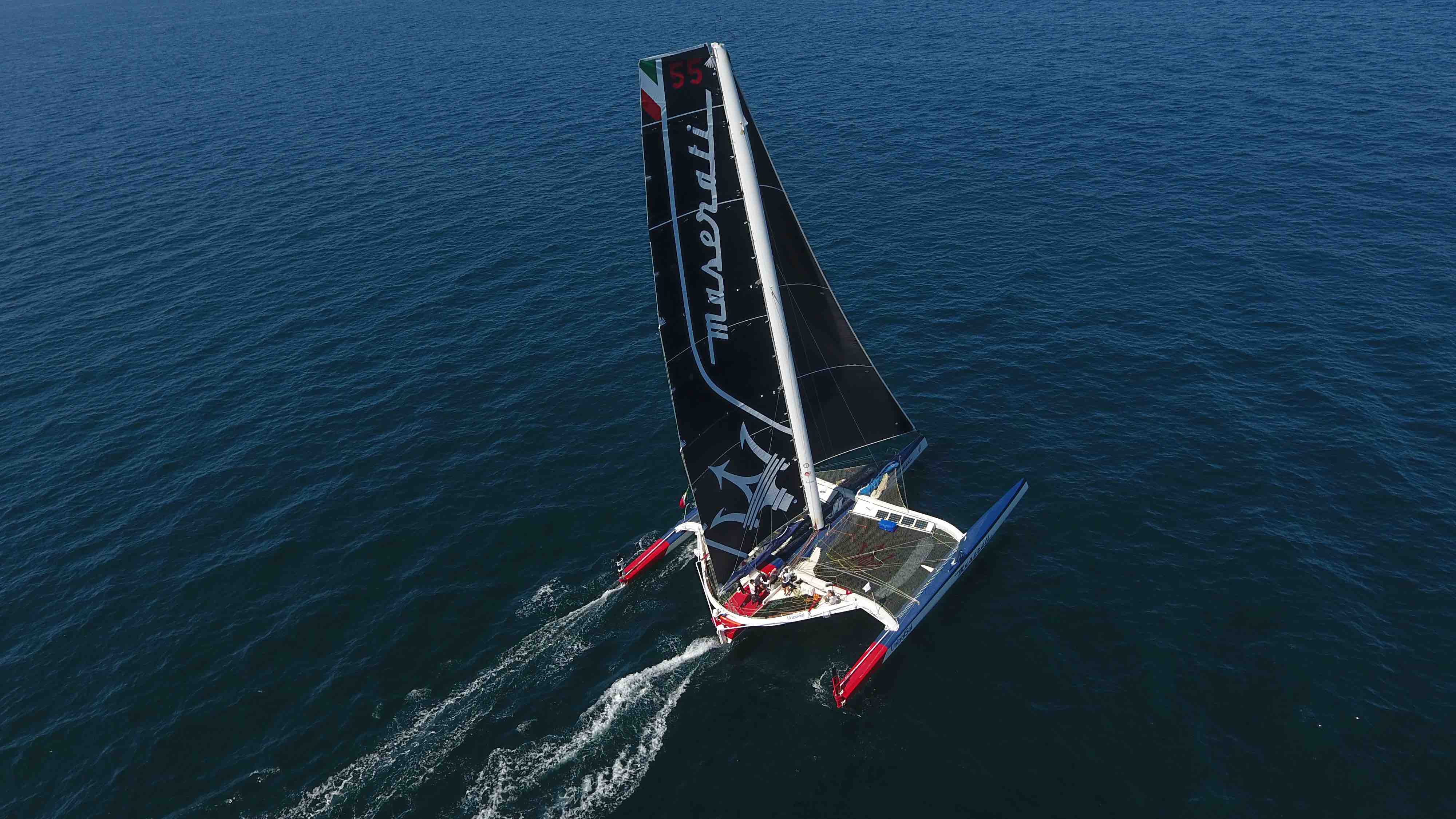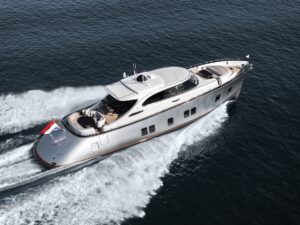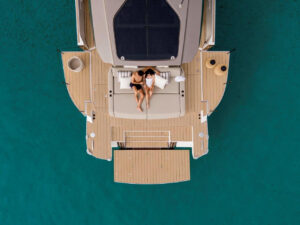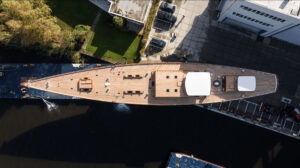The 49° edition of the Transpac for multihulls kicks off tomorrow July 6
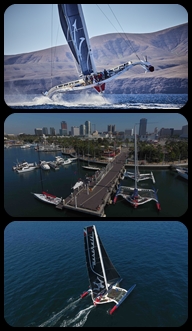 Maserati Multi70 in full foiling mode will face two fearsome rivals: Phaedo3and Mighty Merloe
Maserati Multi70 in full foiling mode will face two fearsome rivals: Phaedo3and Mighty Merloe
Light winds are predicted for the start
All is ready aboard Giovanni Soldini’s Maserati Multi70 trimaran, which tomorrow (Thursday July 6) will set off on the 49° edition of the 2,225-mile long Transpacific Yacht Race from Los Angeles, California to Honolulu, Hawaii.
The starts for the fleet of 55 – mainly monohull – yachts taking part in the 2017 Transpac are staggered daily over four days, with the slowest boats setting off on Monday July 3 and the fourth and final start for the five-boat multihull fleet scheduled for tomorrow (July 6) at 13.30 local time California (22.30 in Italy).
The Italian trimaran faces stiff competition in the multihull division – particularly from two American boats – Lloyd Thornburg’s MOD70 Phaedo3 and Howard Enloe’s 60-foot Mighty Merloe.
Maserati Multi70 will race for the first time in full flying mode – with both flying dagger boards lifting the boat out of the water – making it the first flying ocean-going trimaran.
Until now Maserati Multi70 has raced in development mode with one flying and one non-flying dagger board. This has allowed Soldini’s crew to quickly push the boat up the performance curve.
But that is not to say the development is over – far from it. Soldini and his crew have fitted a new advanced rudder system one side of the boat and during the race to Hawaii will be testing its functionality.
The intricate rudder assembly was designed by the world’s most lauded naval architect, Guillaume Verdier, using custom components and was put together by Soldini’s team.
It has been built stronger than the older version in order to better withstand a collision with ocean debris, a constant threat in ocean racing. The new rudder should enable the Maserati crew to more precisely control the flight of the boat when its foils pick it up from the water in winds above 14 knots.
Phaedo3 – skippered by Brian Thompson with Volvo Ocean Race winner Simon Fisher as navigator – is Maserati Multi70’s longstanding friendly rival. Over the last year, the two crews have fought each other neck-and-neck in classic ocean races like the Rolex Middle Sea, RORC Transatlantic and RORC Caribbean 600.Phaedo3 has been optimised for maximum ocean-going performance in ‘displacement mode’ – where the boat uses its c-shaped dagger boards for lift, but not full flight.
Mighty Merloe – originally Franck Cammas’ record breaking Groupama 2 – has a wide and powerful configuration with a highly efficient rotating and canting mast delivering precise power and control, and three dagger boards – one straight central board with a trim tab and one c-shaped board in the two lateral floats. At 60-feet she is the smallest of the three multihulls but will be a force to be reckoned with in light winds. The top flight crew includes co-skipper Jacques Vincent – one of France’s greatest ever multihull sailors, as well as legendary offshore sailors Loick Peyron and Franck Proffit.
Also competing in the multihull division are: Des Murphy’s Australian flagged 60-foot trimaran LoeReal, with renowned American sailor Jon Shampain as tactician; and John Gallagher’s high performance yet luxurious 62-foot Gunboat catamaran Chim Chim whose 10-strong expert crew also includes a dedicated chef, Brianna Theriault.
Light winds are predicted for the start of the Transpac, which could advantage the non-foiling multihulls.
“As a foiling, flying boat, we need 14 knots of wind or more to get properly up and going,” Soldini explained. “We will have to be smart and fight hard at the start not to let the others get away if the winds are light. In multihull racing boats can stretch out leads of 50 miles or more in just a few hours.”
Once around the nearby Catalina Island, winds averaging around 15 knots are expected for the next 24 hours, providing a good opportunity for Maserati Multi70 to stretch her legs in foiling mode.
The multihull record time for the race is of five days, nine hours, 18 minutes and 26 seconds, set by Bruno Peyron’s French 86-foot catamaran Explorer in 1997.
The challenge is supported by Maserati which, as main sponsor, gives the boat her name, while UnipolSai Assicurazioni is sponsor.
The official suppliers to the challenge are Ermenegildo Zegna for clothing and Boero Bartolomeo S.p.A. for hull enamels and paints.
